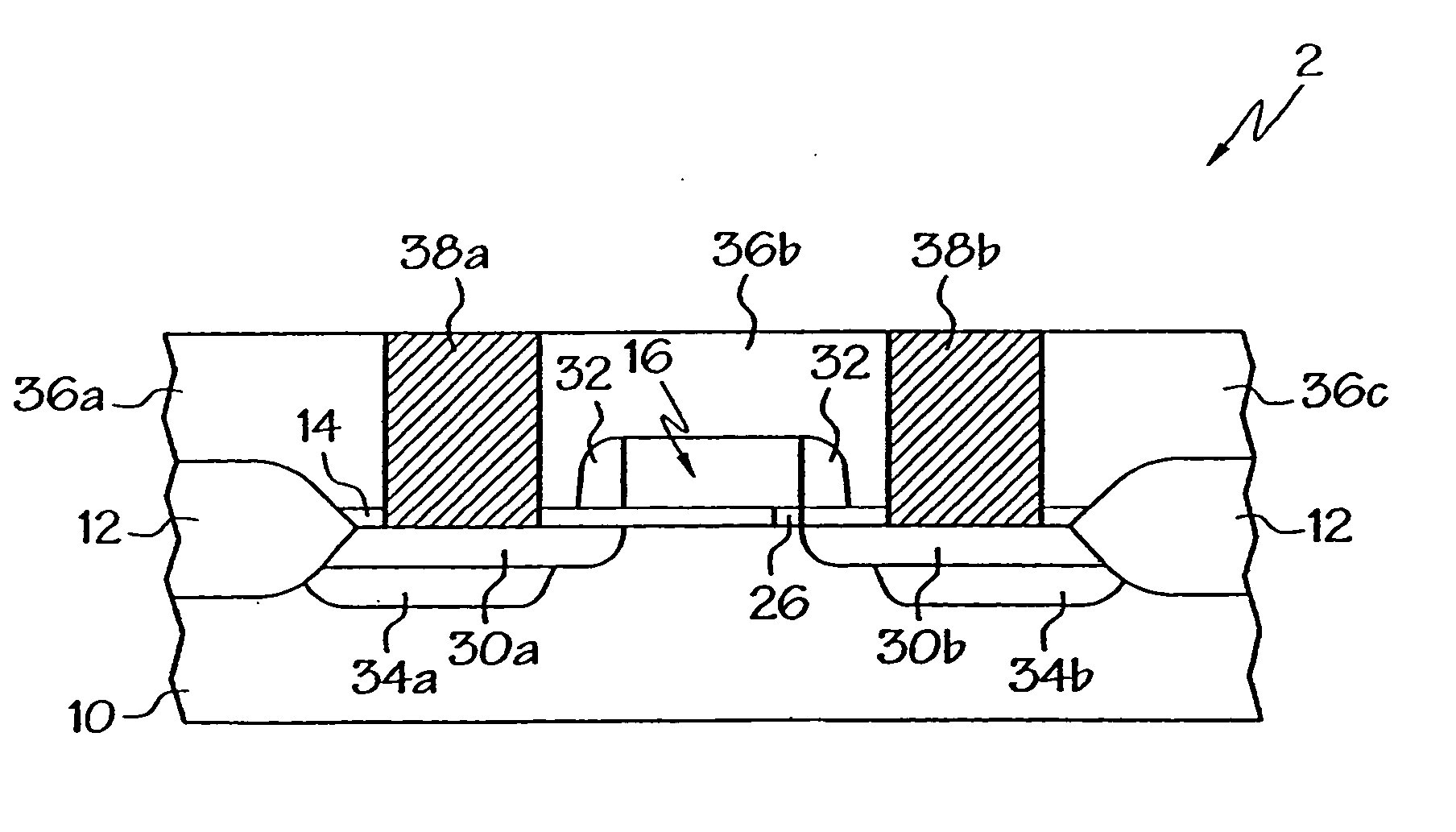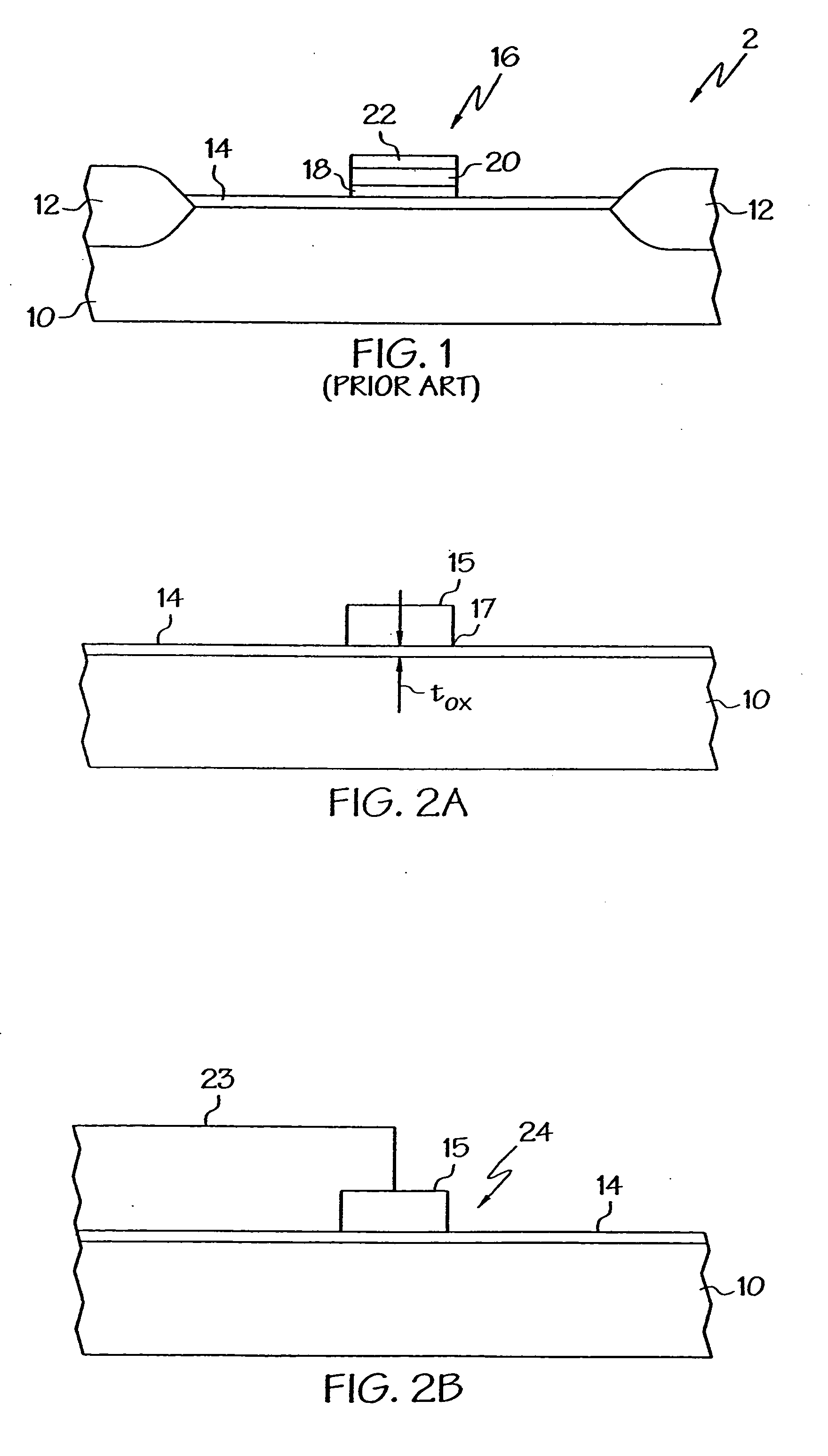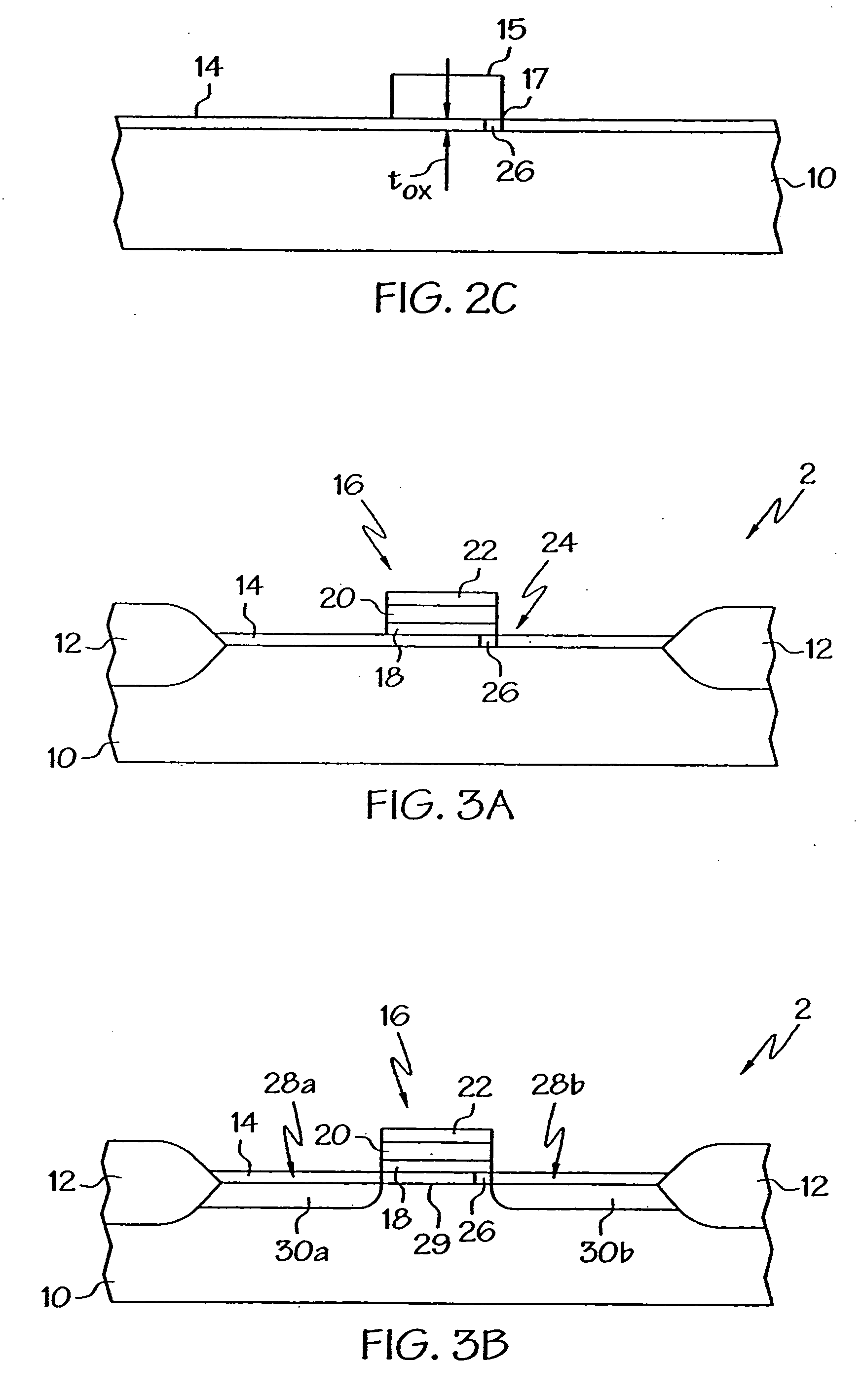Method and device to reduce gate-induced drain leakage (GIDL) current in thin gate oxide MOSFETs
a thin gate oxide mosfet and drain current technology, applied in the direction of semiconductor devices, electrical apparatus, transistors, etc., can solve the problems of degrading affecting the current driving capability of these devices, and affecting the performance of these devices, so as to achieve the effect of reducing the gate induced drain curren
- Summary
- Abstract
- Description
- Claims
- Application Information
AI Technical Summary
Benefits of technology
Problems solved by technology
Method used
Image
Examples
Embodiment Construction
[0020]FIG. 1 is an illustration of a portion of a partially completed FET device 2, which can be formed by any known conventional method. As an example, and generally speaking, the FET device 2 is manufactured by the known local oxidation of silicon (LOCOS) process where portions of a semiconductor layer or substrate 10, through a lithographic mask, are oxidized to form field isolation regions 12. Field isolation regions 12 define active device regions and provide lateral isolation between adjacent devices also formed by the same mask in and on the surface of the substrate 10. For the sake of clarity, the field isolation regions 12 between devices have been only partially shown. Additionally, the formation of the lithographic mask is done by conventional lithography and etching techniques. It is to be appreciated that substrate 10 may be one or more semiconductor layers or structures, which includes active and operable portions of semiconductor devices, of various dopant concentrati...
PUM
 Login to View More
Login to View More Abstract
Description
Claims
Application Information
 Login to View More
Login to View More - R&D
- Intellectual Property
- Life Sciences
- Materials
- Tech Scout
- Unparalleled Data Quality
- Higher Quality Content
- 60% Fewer Hallucinations
Browse by: Latest US Patents, China's latest patents, Technical Efficacy Thesaurus, Application Domain, Technology Topic, Popular Technical Reports.
© 2025 PatSnap. All rights reserved.Legal|Privacy policy|Modern Slavery Act Transparency Statement|Sitemap|About US| Contact US: help@patsnap.com



